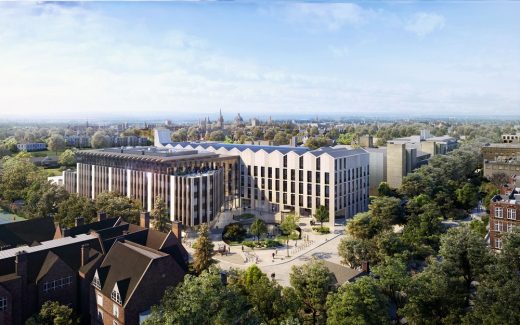Trusted Lifeblood tracking tomorrow’s architects Advice, UCAS Tips, Universities Guide
Lifeblood – tracking tomorrow’s architects
19 Feb 2020
Becoming an architect guide
Thanks to bright young talents like Pascale Sablan, Michelle Acosta, Al Scott and Sarah Castle, the future of architecture looks luminous.
And last year, the Universities and Colleges Admissions Service (UCAS) revealed that architecture student numbers were at their highest level in a decade, with 7,250 students placed on undergraduate courses following A-Level results day.
So far, so good. But in order to encourage even more entrants to our exciting sector from diverse backgrounds, it’s worthwhile providing as much information as possible on how to set a sensible course for an architecture career from the time you’re at school.
With that in mind, here are a few ideas on how tomorrow’s architects can plot a pathway to success and continue to inject lifeblood into the industry.
School subjects
To study an undergraduate architecture course, you’ll need five GCSE’s at grades 9-4, including English, Maths and Science, plus three good A-levels, usually including maths and science subjects, as well as art and design.
Most universities will also expect a strong portfolio of work and specific entry requirements can vary depending on the particular institution.
But if university isn’t for you, there are also pathways to professional practice through apprenticeships and entry level jobs in architectural partnerships.
Tip: Experts from a tutor agency like Teachers To Your Home can prime your study methods for premium grades.
University stamina
The journey towards qualification as an architect is challenging but enjoyable, so you’ll need stamina and self-belief.
After completing a degree recognised by the Architects Registration Board (ARB), you’ll need a year of work experience under your belt, then another two year specialist university course like a BArch, Diploma or March.
And that’s not all – the next steps are a further year’s practical experience, followed by a final exam.
You’ll be financially rewarded for all your hard work, however – in 2019, RIBA figures show that the median salary for an ARB-registered architect with less than five years’ experience was £34,500 and this figure rises commensurate with career progression.
Tip: Find an architecture internship on Gradcracker if you’re a current student struggling to find a suitable opportunity.
Architecture Higher Education – Final thoughts
We’ve described the traditional route to becoming a full-time architect, but remember that apprenticeships are also available for those who want to earn while they learn and get into the nitty-gritty of a working environment.
There are RIBA-validated apprenticeships offered through institutions like London South Bank University, University of Portsmouth, University of Bath and Manchester School of Architecture, so check their sites for the lowdown.
However, whichever route you take, if your school skillset mixes creativity and an eye for dynamic design with a smattering of STEM subject savvy, the chances are that you’re already an excellent candidate for an architecture career – so if you’ve not considered it before, it’s never too early to take your first steps.
So ends our discussion, but please share your own architecture career tips in the comments section.
Comments on this guide to Lifeblood – tracking tomorrow’s architects article are welcome.
Higher Education Building Design

image courtesy of article provider
New Life and Mind Building, University of Oxford
Architects: NBBJ

images courtesy of architecture practice
New Life and Mind Building University of Oxford
Henry Royce Institute Hub Building at University of Manchester
Design: NBBJ Architects
Henry Royce Institute for Advanced Materials Hub
Comments / photos for the Lifeblood – tracking tomorrow’s architects Advice page welcome




